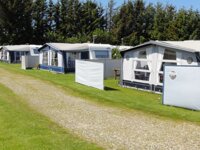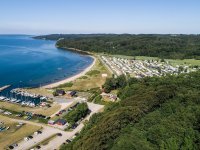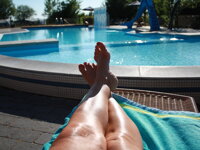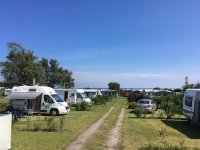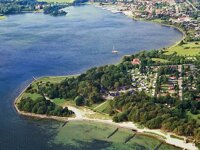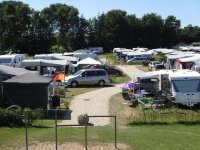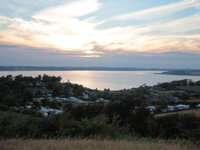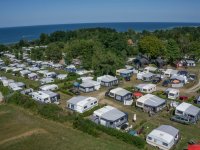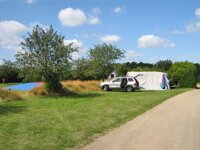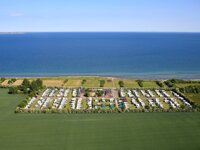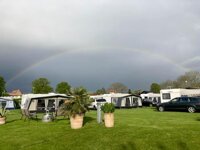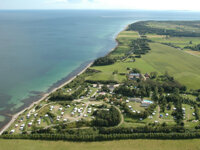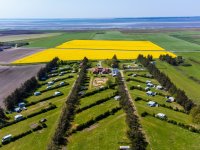Camping in Denmark
109 campsites in Denmark
Campsite Listing Google Map
The following consent is required:
Tracking & performance, Targeting & advertising.
Denmark
The gateway to Scandinavia, Denmark, is known as the country of fine dining, Lego and Hans Christian Andersen. Its upbeat capital, Copenhagen, was once a Viking fishing village and is now the cultural and economic centre of the country, a hub of activity with busy cafés, fascinating museums and a thriving live music scene.
Camping in Denmark offers the best of Danish culture; there’s Funen with its pastoral feel, Zealand with its historic castles and manors and Jutland with its moors and fjords, not to mention the wild, windswept Faroe Islands.
Funen is the smaller of the two main islands and the location of Odense, Hans Christian Andersen’s birthplace. It is in the island’s picturesque scenery that the author found inspiration for many of his fairytales, and a local museum invites visitors to celebrate his work. Continuing on the theme of great fiction, Denmark’s largest island, Zealand, is the setting of Kronborg Castle, a 16th-century fortress and home to Prince Hamlet.
The ferocious North Sea shapes the Jutland coastline and offers a spectacular natural environment with bays, heathland and forests that are home to a variety of birdlife. If you’re camping in Denmark for a real back-to-nature experience, this is the island to do it.
Find campsites in Denmark by browsing the listing and refining your results by location.
Unknown matrix block type: tableOfContents2!
Basic Information

Capital Copenhagen
Currency Danish Krone (DKK)
Language(s) Danish
Time Zones CET (GMT+1)
Summer (DST) CEST (UTC+02)
Telephone Code +45
Units Metric
EU Member Yes
Schengen Area Yes
Tourism Website www.visitdenmark.com
Denmark is a member of the European Union, and customs inspections are occasionally conducted on individuals and vehicles crossing the border to ensure compliance with Denmark regulations.
Shopping in Denmark
Denmark is a Scandinavian country very famous for its rich design heritage. Arne Jacobsen and Hans J. Wegner are big names in design and have made Denmark’s design sector one of the world's largest.
If you are looking to shop for fashion and love interior design, Denmark is the best place to travel to, as it is considered one of the hottest regions for interior design, From cutting-edge furniture and lighting to traditional Scandinavian pieces.
With so many marketplaces and shopping centres in cities like Copenhagen, Aarhus and Odense, you won't run out of places to shop. From high-end fashion and design stores to antiques and crafts stores, as well as the flea markets and vintage stores, there's so much on offer that you’ll never leave Denmark empty-handed.
Shops In Denmark are generally open from 9/10a.m. – 5.30/6p.m. Monday to Thursday, closing later on Fridays at around 7/8 p.m. and earlier on Saturdays at 1 or 2p.m.
Some shops stay open until 5 p.m. on Saturdays in Copenhagen and larger towns. Many grocery stores are open until 9 p.m. Many larger shops and department stores are also open on Sundays, except on national and bank holidays.
Danish Money
Denmark uses the Danish Krone as its official currency. It is advised to carry some cash, but ATMs are readily available in almost all towns and cities, although it is advisable to carry some cash, especially when visiting smaller towns and villages where card acceptance may be limited.
Public Holidays in Denmark
- New Year's Day: 1st January
- Maunday Thursday, Good Friday and Easter Monday
- Prayer Day: 5th May
- Ascension Day, Pentecost Sunday and Whit Monday
- Christmas Eve Day: 24th December
- Christmas Day: 25th December
- Second Day of Christmas: 26th December
Please note Some dates are moveable, so please check before travelling.
Driving in Denmark

Visitors to Denmark who wish to drive in the country must comply with the following requirements:
- A valid driver's license: Visitors must have a valid driver's license from their home country.
- Car insurance: Visitors must have valid car insurance for their vehicle, covering both the driver and passengers.
- Vehicle registration: Visitors must have a valid vehicle registration for their car, which must be displayed on the vehicle.
- Road rules: Denmark's traffic laws follow the right-hand side of the road. Overtake on the left. The use of seat belts is mandatory for all occupants of a vehicle. Visitors must follow Denmark's traffic laws, including speed limits, traffic signals, and road signs.
- There is a duty to give way to traffic approaching from the right. A bold line, a line of white triangles (shark’s teeth) painted across the road or a white triangle with a red border indicates that you must stop and give way to traffic on the road you are entering.
- Your headlights must always be switched on and set to a dipped beam, even in the daytime.
- Safety equipment: A red warning triangle is compulsory in case of an accident or breakdown. It is recommended that visitors equip their vehicles with a fire extinguisher and a first-aid kit. While not compulsory, it is also recommended that a reflective jacket be carried to be used in the event of the driver having to step out of the vehicle in an emergency or breakdown situation.
- Minimum driving age: The minimum driving age is 18 years old.
- Alcohol law: If the level of alcohol in the bloodstream exceeds 0.05 per cent, severe penalties include licence suspension.
Denmark Emergency Services
- Denmark’s emergency number for life-threatening emergencies.
To access police, ambulance, fire brigade services and maritime search & rescue: 112 - Police Non-emergency number: 114
- Help on the road: Many European breakdown companies operate breakdown services in Denmark, such as the AA, European Breakdown Cover, and the RAC. The Danish Motoring Organisation (Forenede Danske Motorejere - FDM) can provide non-emergency assistance as well as mechanical and legal assistance.
Denmark's Climate
COPENHAGEN WEATHERThe warm Gulf Stream moderates the Danish climate and is milder than other Scandinavian countries. Denmark has four distinct seasons, with the spring months of April to May being the mildest. The summer months of June, July and August are the hottest. From September to November, autumn is usually rainy and more overcast. Winter runs from December to March and is usually cold, with frost and snow.
The prevailing wind direction is westerly, meaning that the west coast of Denmark receives more rainfall than other parts of the country. The annual rainfall in Denmark averages 63cm of precipitation. Denmark is surrounded by a coastline, and swimming in the sea is popular. The seawater temperature around Denmark, from July to August, is between 10˚C and 18˚C.

